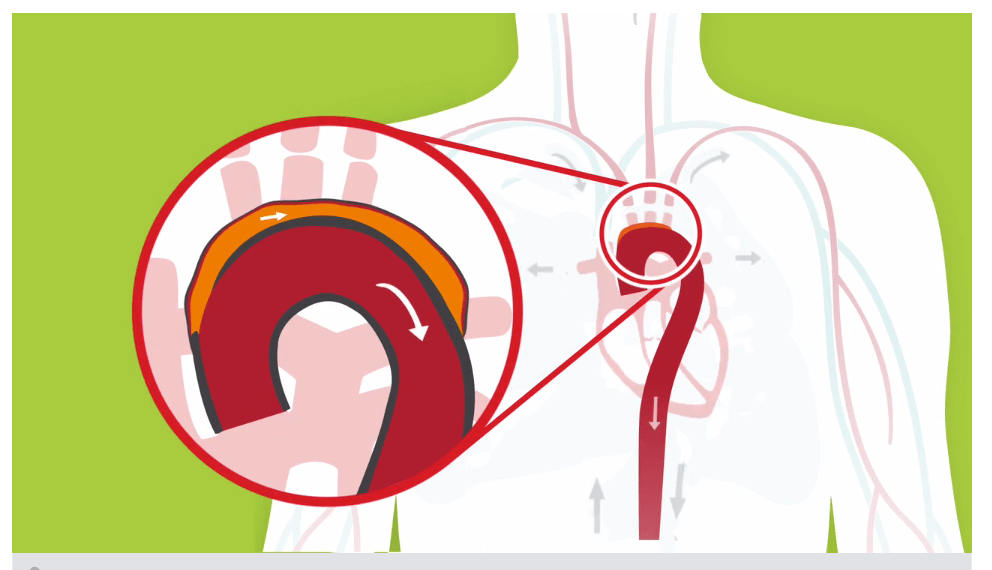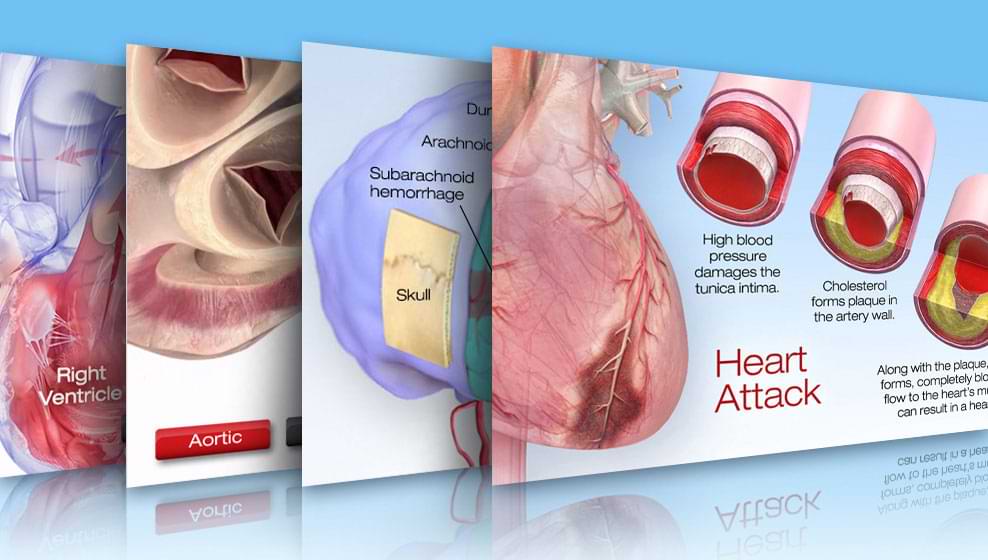Your Aorta: The Pulse of Life
Understanding the aorta and its job in circulation
The aorta is the main artery that carries blood away from your heart to the rest of your body. The blood leaves the heart through the aortic valve. Then it travels through the aorta, making a cane-shaped curve that gives rise to other major arteries that deliver oxygen-rich blood to the brain, muscles and other cells.
The aorta can be more than an inch wide in some places and has three layers:
- Inner layer (intima)
- Middle layer (media)
- Outer layer (adventitia)
When a problem occurs with the aorta, the heart and the entire body’s blood supply can be put at risk.
What is an aortic aneurysm?

An aortic aneurysm is a weakened or bulging area on the wall of the aorta, which may occur anywhere along its length.
Aortic aneurysms can cause two problems:
- Rupture: The weakened or ballooned area may develop a hole, called a rupture, that allows blood to burst out into the body.
- Dissection: The blood pumped forcefully through the aorta can split the layers of the artery wall, allowing a buildup of blood to continually leak into the space, which further splits the artery wall. This can lead to aortic rupture or decreased blood flow (ischemia) to organs.
What are the symptoms of an aortic emergency?
Some of the symptoms, such as chest pain and jaw pain, are generally associated with a heart attack. But sudden stabbing pain in the neck, jaw, abdomen, chest or shoulder, fainting, difficulty breathing and sometimes even sudden weakness may also be symptoms of an aortic event. Because the aorta travels from above the heart to below the navel, severe pain may occur at any place along this major vessel. Additional symptoms of a rupture may include clammy skin, nausea and vomiting or shock.
Aneurysms and dissections of the aorta are life-threatening medical emergencies.
How is an aortic aneurysm or dissection treated?
The two main treatment options are surgery and/or medications.
- Surgery repairs or replaces the injured section of the aorta.
- Medication lowers blood pressure and reduces risks of rupture. Medications wouldn't be a treatment option in an emergency, but they may be appropriate if your health care professional recommends them.
Risk factors for aortic aneurysm and dissection
Besides male gender, advanced age and genetics or family history, people who have the following conditions may be at higher risk for an aortic aneurysm or dissection:
- High blood pressure. The increased force of blood can weaken the artery walls.
- Genetic conditions, such as Marfan syndrome, decrease the body’s ability to make healthy connective tissue.
- High cholesterol or atherosclerosis. A buildup of plaque may cause increased inflammation in and around the aorta and other blood vessels.
- Inflamed arteries. Certain diseases and conditions, such as vasculitis, can cause the body’s blood vessels to become inflamed.
- Trauma, such as car accidents.
- Smoking. People with a history of smoking make up 75% of abdominal aortic aneurysms.
- Poor diet. Diets high in fat and sugar have been associated with increased risk for aortic aneurysms.
- Lack of regular exercise. Physical activity can help reduce blood pressure, and high blood pressure is a risk factor for abdominal aortic aneurysms.
Screening: The U.S. Preventive Services Task Force recommends that men ages 65-75 who have ever smoked get an ultrasound screening for abdominal aortic aneurysms, even if they have no symptoms.
People living with aortic disease or other heart-related conditions can improve their odds of living a longer and healthier life. It’s important to:
- Report any symptoms immediately.
- Get regular checkups.
- Always take care of your heart health.





